9 Mysterious Undeciphered Codes and Inscriptions in History
From Neolithic tablets containing the oldest known system of writing, to a series of letters scrawled on the back of a dead man’s book, some of the most legendary undeciphered codes and texts remain a challenge for even the world’s best cryptographers, code breakers and linguists. Yet unravelling these mysterious puzzles remains as important as ever, since many of these enigmatic inscriptions could hold the keys to understanding civilizations that have long since faded into historic oblivion. Here we feature nine of the most fascinating undeciphered codes and inscriptions throughout history.
1: Enigma of the Shugborough Inscription
In the grounds of Shugborough Hall in Staffordshire, England, sits an 18th-Century monument known as the Shepherd’s Monument. It was commissioned by Thomas Anson, a member of the British Parliament, and crafted sometime between 1748 and 1763 by Flemish sculptor Peter Schee. The monument contains a relief, depicting a copy of a Nicolas Poussin painting The Shepherds of Arcadia, and a cipher text that has stumped historians and decoders for hundreds of years.
The mysterious inscription is located beneath the relief and contains the letters O U O S V A V V. Framing these eight letters, at a slightly lower level, are the letters D M. The Shugborough inscription is a renowned inclusion to the current list of undeciphered codes, which has baffled experts and historians for centuries.
- The Ancient Origins of Some Dead or Dying Languages
- New AI Algorithm is Cracking Undeciphered Languages
So cryptic is the cipher text, that it became a feature in the international bestseller The Holy Blood and the Holy Grail by Michael Baigent, Richard Leigh and Henry Lincoln, as well as Dan Brown’s historical thriller, The Da Vinci Code. Both books presented the theory that Nicolas Poussin was a member of the secretive Priory of Sion, a Medieval monastic order, and that his painting The Shepherds of Arcadia contains deep esoteric messages hidden within it.
It is not clear whether the inscription will ever be decoded, nor whether it was ever intended to be. Whoever inscribed it must have known that the letters would last throughout the centuries and be viewed by civilizations to come. It is possible that only a select few ever knew the purpose of the letters and what they stand for, and so the secret of this undeciphered code will be kept under wraps for eternity.
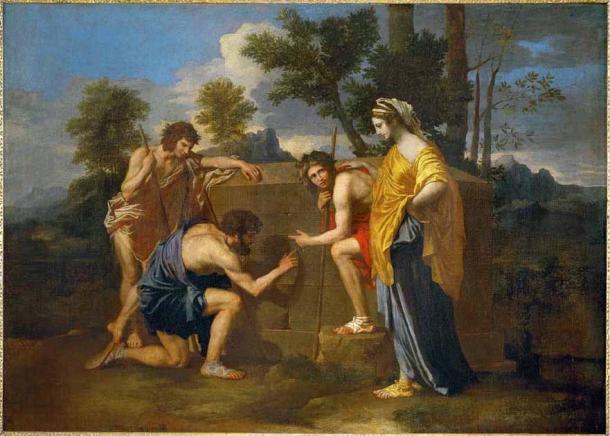
The Shepherds of Arcadia, by Nicolas Poussin, is reproduced on the Shepherd’s Monument, along with the Shugborough Inscription, which is one of the most famed undeciphered codes of all time. (Public domain)
2: The Mysteries Trapped Within Mayan Hieroglyphs
For hundreds of years, linguists have been trying to decode the ancient hieroglyphic script of the Maya, left behind on monument carvings, painted pottery and drawn in handmade bark-paper books. Thankfully, decipherment has been advancing at a rapid rate and significant progress is being made.
Decoding these ancient encrypted messages will signify a huge step forward for deepening our understanding of the social, political and historical aspects of Maya civilization. For a long time, many scholars believed that the script did not represent a language at all, or that it wasn't a complete writing system.
In some ways, it is easy to see why this belief prevailed, as it is arguably one of the most visually striking writing systems of the world. Mayan hieroglyphic script is very complex, with hundreds of unique signs or glyphs in the form of humans, animals, supernatural objects, and abstract designs.
The first major breakthrough in decipherment came during the 1950s when a Russian ethnologist proposed that the Mayan script was at least partly phonetic. His ideas were not welcomed, but he was eventually proved correct. Progress accelerated during the 1970s and 1980s when more linguistics began to take an interest in the undeciphered codes of Mayan hieroglyphs.
Over time, scholars came to understand that it was in fact a fully functioning writing system in which it was possible to express unambiguously any sentence of the spoken language. Despite the progress, much has remained to be decoded from the immense body of carvings and inscriptions that has languished for centuries in jungle ruins and museum closets.
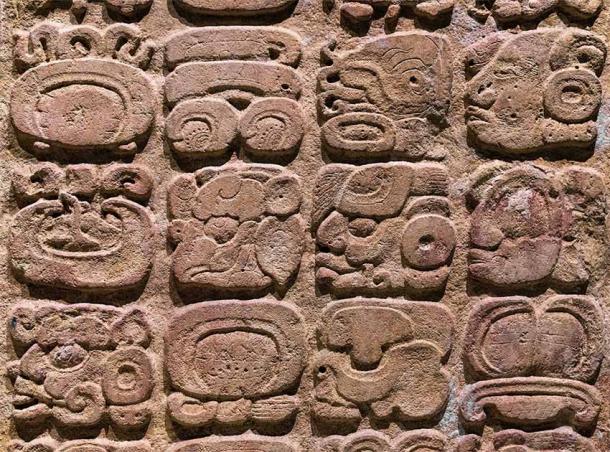
An example of the hieroglyphic writing of the Maya. (SL-Photography / Adobe Stock)
3: The Mysterious Rongorongo Writing of Easter Island
During the 19th Century, ancient artifacts containing a set of etched symbols were discovered on the world-renowned Easter Island. A small remote island located a few thousand miles west of South America, Easter Island has become famous for the hundreds of giant monolithic anthropomorphic statues called moai. The intricate designs appear to be glyphs, or a form of writing, but the meaning of the glyphs, with their undeciphered codes, has never been unlocked. Some believe that decoding the mysterious writing could offer answers into what caused the collapse of the ancient Easter Island civilization.
The Rongorongo writing was first discovered by Eugène Eyraud, a lay friar of the Roman Catholic Church, who went to Easter Island as a missionary on January 2, 1864. In an account of his visit, he wrote of his discovery of 26 wooden tablets containing the unusual inscriptions written un undeciphered codes.
The irregularly shaped wooden tablets were weathered, burned or otherwise damaged when they were found. The glyphs were also found on a chieftain's staff, a bird-man statuette and two reimiro ornaments. Written in-between lines that run across the tablets, the Rongorongo images were shaped like humans, animals, plants and geometric forms.
Deciphering the glyphs has proven difficult. Assuming that Rongorongo is writing, there are three barriers that make it difficult to decipher: the limited number of texts, the lack of illustrations and other contexts with which to understand them, and poor attestation of the Old Rapa Nui language, which is likely to be the language reflected in the tablets.
Some believe that the Rongorongo is not true writing, but proto-writing, which is a set of symbols that convey information without containing any truly linguistic content. While it remains unclear exactly what the Rongorongo is intended to convey, the discovery and inspection of the tablets remain an important key to understanding the past civilizations of Easter Island.
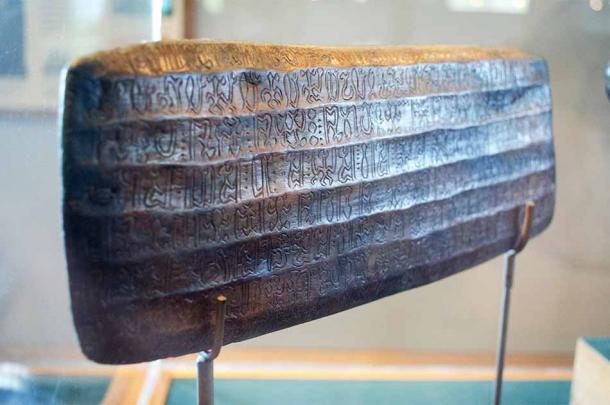
One of the undeciphered codes we’re featuring is the mysterious Rongorongo writing of Easter Island. Replica of a Rongorongo tablet at the Englert Museum. (Greg Poulos / CC BY-SA 2.0)
4: The Neolithic Inscriptions of the Tartaria Tablets
In 1961, archaeologist Nicolae Vlassa discovered what may be direct evidence of the earliest forms of writing in the world. While conducting an archaeological excavation at a Neolithic site in Romania, Vlassa’s team uncovered three small clay tablets containing indecipherable etchings, now known as the Tartaria Tablets, which were dated to 5,500 BC.
There have been varying interpretations of the meanings of the etchings on the tablets. Some believe the etchings are an early form of writing, while others believe they are pictograms, random scribbles, religious symbols, or symbols of ownership. Due to speculation that the tablets were found at a sacrificial burial site, many believe that the symbols were of a religious context.
Overall, analysis of the Tartaria Tablets has led to many interesting hypotheses about early human culture, and the emergence of communication by writing. While ancient artifacts may initially appear to answer many questions about human civilization, in this instance, it is clear that some finds ultimately lead us to more questions than answers.
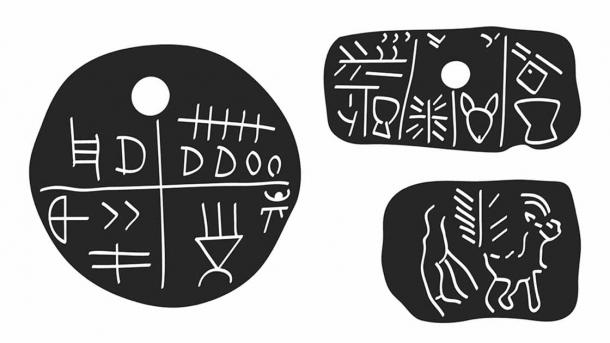
Illustration of the Tartaria Tablets. (drutska / Adobe Stock)
5: The Curious Phaistos Disc – Ancient Mystery or Clever Hoax?
In 1908, an Italian archaeologist ventured into the ruins of Phaistos, an ancient Minoan palace on the south coast of Crete. In an underground temple depository, among burnt bones, dust and ashes, he found a remarkably intact golden-hued disc. The discovery is known as one of the most famous mysteries in archaeology: the Phaistos Disc.
The Phaistos Disc is a large, fired clay plate, about 15 cm (5.91in) in diameter and 1 cm (0.39 in) thick. Both sides of the disc are covered with a spiral of strange stamped symbols, circling clockwise towards the disc’s center. The symbols are pictograms, portraying images including a man walking, a tattooed head, a helmet, an arrow, manacles, cats, eagles and more.
Both Sir Arthur Evans—discoverer of the Minoan capital Knossos in 1900—and Luigi Pernier attempted to translate the discs but were unsuccessful. Since that time no fewer than 26 notable attempts have been made to decipher the code.
It is presumed that the writing is Linear A, a script unconnected to any known language, but some scholars suggest it is syllabic writing related to various languages, such as Hittite, Homeric Greek, Indo-European or a Semitic language. Until the undeciphered codes of the Phaistos Disc can be cracked and the truth revealed, the golden disc will continue to draw curious linguists, analytical cryptographers and lovers of a good ancient mystery.
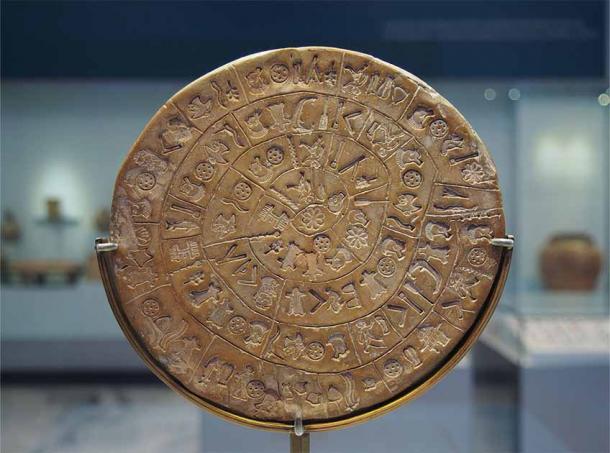
Side A of the Phaistos Disc, on display at the Archaeological Museum of Heraklion. First discovered at the ruins of Phaistos, the disk is covered with undeciphered codes. (C. messier / CC BY-SA 4.0)
6: The Enigma of the Voynich Manuscript
In 1912, a Polish-American book dealer named Wilfrid M. Voynich went to Rome on an acquisitions trip. There he happened upon a trunk that contained a rare 15th century manuscript now known as the Voynich manuscript. Since its appearance, this document—which is now under lock and key at the Beinecke Rare Book and Manuscript library at Yale—has been studied extensively and has stumped even the most successful cryptographers and code breakers.
The author is unidentified, as is the obscure language used throughout the text. Even many of the illustrations remain enigmatic. Very little can be made of the cryptic language used throughout the text. Some words only appear in certain sections, some letters only in certain places in words. The repetition of wording is also peculiar, and does not follow any identifiable rhythm.
Many experts believe that this was a language constructed by the author to hide secret information, though it does not follow any known code, causing some to speculate that the book is nothing more than an elaborate hoax. Researchers continue to investigate the enigmatic text in the hope of finally revealing its secrets.
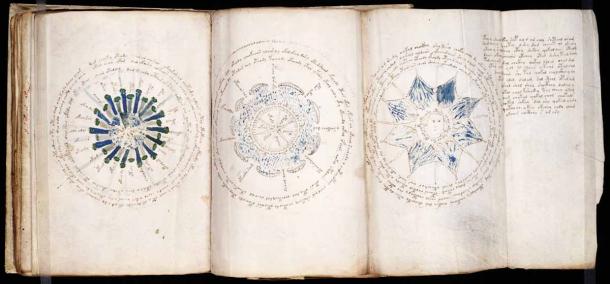
A page containing undeciphered codes within the Voynich manuscript. (Public domain)
7: The Unknown Etchings of the Dispilio Tablet
The Dispilio tablet was discovered by a professor of prehistoric archaeology, George Xourmouziadis, in 1993 in a Neolithic lake settlement in northern Greece near the city of Kastoria, once home to a group of people who occupied the settlement 7,000 to 8,000 years ago. The Dispilio tablet was one of many artifacts found in the area, however the importance of the tablet lies in the fact that it has an unknown written text on it.
The wooden tablet was dated using the C12 method to have been made in 5260 BC, making it significantly older than the writing system used by the Sumerians. The text on the tablet includes a type of engraved writing which probably consists of a form of writing that pre-existed Linear B writing used by the Mycenaean Greeks.
As well as the tablet, many other ceramic pieces were found that also have the same type of undecipherable codes written on them. Professor Xourmouziadis has suggested that this type of writing, which has not yet been deciphered, could be a form of communication including symbols representing the counting of possessions. Decoding the writing is going to be difficult if not impossible, unless a new Rosetta stone is found.
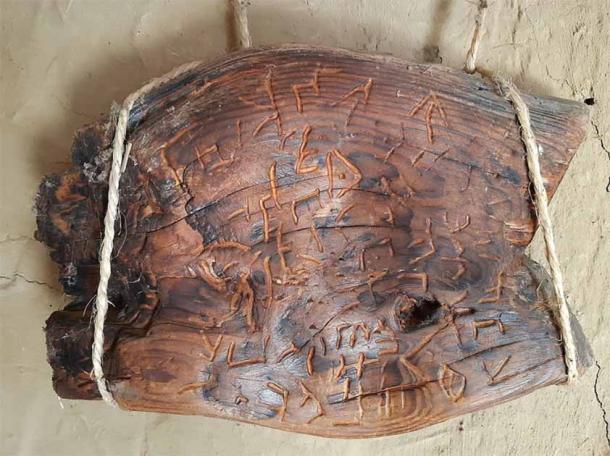
Model reproduction of the Dispilio tablet, covered in undeciphered codes, at the prehistoric lakeside settlement of Dispilio in northern Greece. (Мико / CC BY-SA 4.0)
8: The Rohonc Codex
The Rohonc Codex was discovered in Hungary in the 1800s. It is believed to have been part of the personal library of Count Gusztáv Batthyány, before he donated his entire personal collection to the Hungarian Academy of Sciences.
When the Codex surfaced, it initially appeared to be from medieval times. However, the text, which appears to resemble Old Hungarian script, was completely unintelligible. The mysterious text led many to wonder what the writings meant, who wrote it and what purpose it had served. Many of these questions remain unanswered, as the author has not been identified, and the text has yet to be translated.
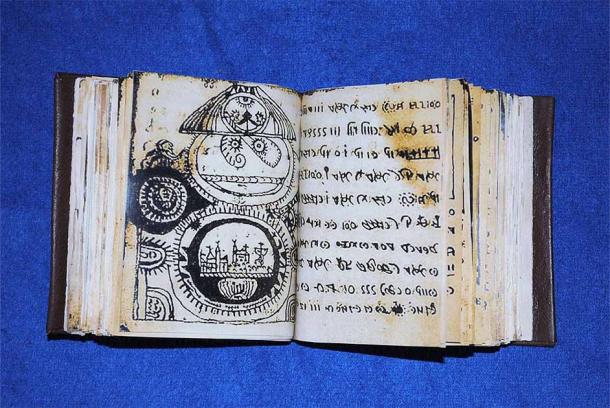
A copy of the Rohoc Codex (not the original). (Public domain)
9: The Mysterious Danube Valley Civilization Script
The Danube Valley civilization is one of the oldest civilizations known in Europe. It existed from between 5,500 and 3,500 BC in the Balkans and covered a vast area, in what is now northern Greece to Slovakia (South to North), and Croatia to Romania (West to East) during its height.
One of the more intriguing and hotly debated aspects of the Danube Valley civilization is their supposed written language. While some archaeologists have maintained that the “writing” is actually just a series of geometric figures and symbols, others have maintained that it has the features of a true writing system.
- 10 of the World’s Oldest Languages Still Used Today
- Artificial Intelligence Inching Closer to Deciphering Long Lost Languages
Harald Haarmann, German linguistic and cultural scientist, as well as leading specialist in ancient scripts and ancient languages, is known to have supported the view that the Danube script is the oldest writing in the world. The tablets that were found have been dated to 5,500 BC, and the glyphs on the tablets, according to Haarmann, are a form of language yet to be deciphered.
The symbols, which are also called Vinca symbols, have been found in multiple archaeological sites throughout the Danube Valley areas, inscribed on pottery, figurines, spindles and other clay artifacts.
However, the majority of Mesopotamian scholars reject Haarmann’s proposal, suggesting that the symbols on the tablets are merely decorative. This is despite the fact that there are approximately 700 different characters, around the same number of symbols used in Egyptian hieroglyphs.
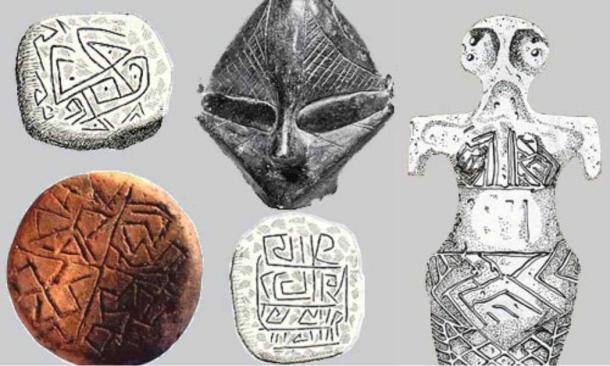
Composite image of various artifacts including the undeciphered codes of the supposed Danube Valley Civilizaiton script. (UNED)
From Neolithic tablets to intricate glyphs on ancient artifacts, the world harbors a rich tapestry of undeciphered codes and texts that continue to puzzle scholars and enthusiasts alike. Each mysterious script, whether etched into monuments of bygone eras or scribbled in rare manuscripts, represents a tantalizing puzzle, a potential key to unveiling secrets of ancient civilizations and enigmatic individuals. As researchers endeavor to crack these cryptic languages and ciphers, they bridge gaps in human history, inching closer to unraveling some of history's most beguiling mysteries.
Top image: Mayan codex with hieroglyphic alphabet script writing system, Mexico City, Mexico. Source: SL-Photography / Adobe Stock.
















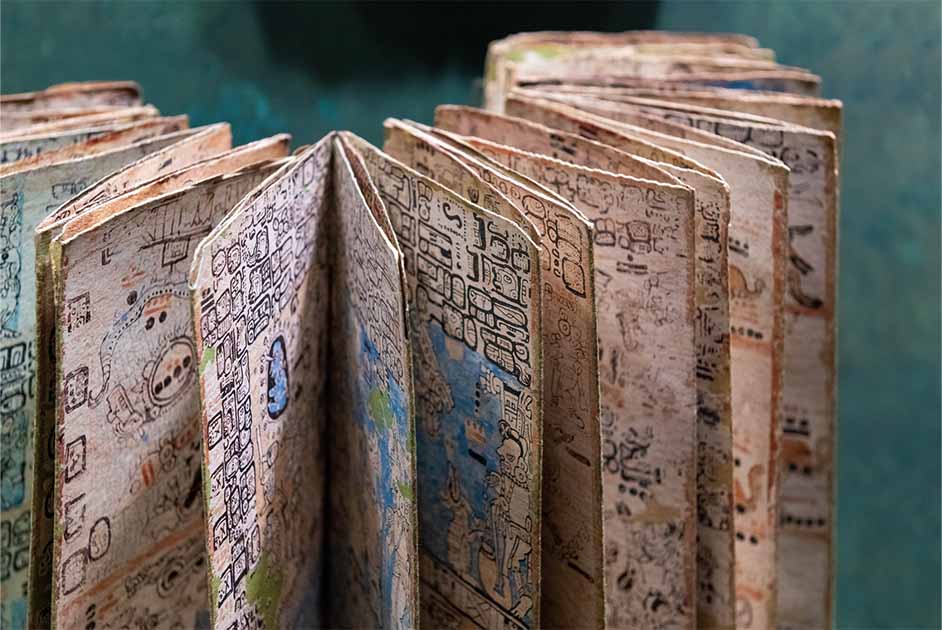

Comments
Fascinating article.
What abt the Indus valley civilization and its script?
What abt the Indus valley civilization and its script?
Cool ! yet if not on you tube, then how to gain copy to watch ? ebay ? what country of ebay ? want to watch it.
The Shepherds Monument has been decoded by a Canadian man named Louis "Buff" Parry. He and this subject are the focus of a film called "Lapis Exillis" by Gavin Wince. This is Mr. Parry's decipherment: The people in the painting/reverse relief are: Israel(Jacob), Rachel, Joseph(standing over Israel), and Benjamin(next to Rachel). D and M are the Roman numerals 500(D) and 1000(M) as in 1500 as in the 1500th verse of the Torah/Bible; Genesis 49:26(KJV)- "The blessings of thy father have prevailed above the blessings of my progenitors unto the utmost bound of the everlasting hills: they shall be on the head of Joseph, and on the crown of the head of him that was separate from his brethren"- which is depicting the scene. O U O S V A V V is Hellenized/Latinized Hebrew. It is three separate words, the last word is 'mirrored' within the text itself. O = the. U O S V= J(Y)oseph. AVV = VVA = bloom, reading it as it were 'Hebrew' right to left. Please watch the film, this rabbit hole is deep and it gets intense.
Pages